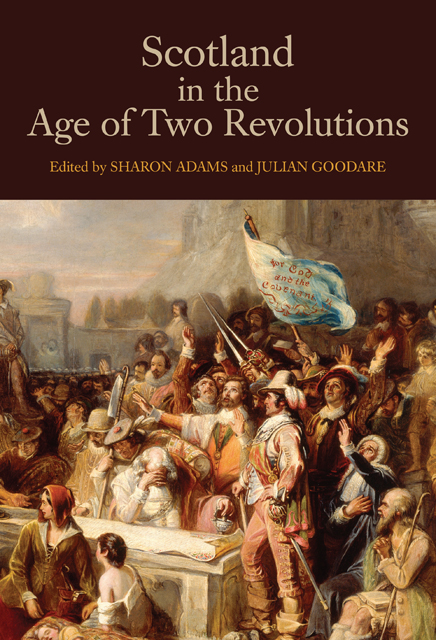Book contents
- Frontmatter
- Dedication
- Contents
- Figures and Tables
- List of Contributors
- Preface
- List of Abbreviations
- 1 Scotland and its Seventeenth-Century Revolutions
- 2 The Middle Shires Divided: Tensions at the Heart of Anglo-Scottish Union
- 3 The Western Highlands and Isles and Central Government, 1616–1645
- 4 The Scottish Bishops in Government, 1625–1638
- 5 The Scottish Revolution
- 6 In Search of the Scottish Republic
- 7 Highland Lawlessness and the Cromwellian Regime
- 8 The Worcester Veterans and the Restoration Regime in Scotland
- 9 The Political Thought of the Restoration Covenanters
- 10 Scottish State Oaths and the Revolution of 1688–1690
- 11 The Tribulations of Everyday Government in Williamite Scotland
- 12 The Company of Scotland and Scottish Politics, 1696–1701
- Chronology of Seventeenth-Century Scotland
- Further Reading
- Index
- Studies in Early Modern Cultural, Political and Social History
3 - The Western Highlands and Isles and Central Government, 1616–1645
Published online by Cambridge University Press: 28 February 2023
- Frontmatter
- Dedication
- Contents
- Figures and Tables
- List of Contributors
- Preface
- List of Abbreviations
- 1 Scotland and its Seventeenth-Century Revolutions
- 2 The Middle Shires Divided: Tensions at the Heart of Anglo-Scottish Union
- 3 The Western Highlands and Isles and Central Government, 1616–1645
- 4 The Scottish Bishops in Government, 1625–1638
- 5 The Scottish Revolution
- 6 In Search of the Scottish Republic
- 7 Highland Lawlessness and the Cromwellian Regime
- 8 The Worcester Veterans and the Restoration Regime in Scotland
- 9 The Political Thought of the Restoration Covenanters
- 10 Scottish State Oaths and the Revolution of 1688–1690
- 11 The Tribulations of Everyday Government in Williamite Scotland
- 12 The Company of Scotland and Scottish Politics, 1696–1701
- Chronology of Seventeenth-Century Scotland
- Further Reading
- Index
- Studies in Early Modern Cultural, Political and Social History
Summary
The key to understanding the influence of national politics on the Western Highlands and Isles lies in the very nature of the tenuous relationship between the Western Highlands and Isles and central government. The experiences of those in the Western Highlands and Isles differed from their Highland counterparts east of the central Druim Alban Range; this was the territory formerly under the Lordship of the Isles and for centuries had been fraught with bloodshed. The animosity in the region towards the Campbells of Argyll and the lingering ties to Ireland and Catholicism created a political situation that resulted in the Western Highlands and Isles being viewed by central government as barbarous, uncivilised, and often a problem for the Campbells to handle rather than central government. This chapter provides an overview of the occasional points of contact between central government and the Western Highlands and Isles in the reign of Charles I, and will highlight specific incidents that indicate the withdrawal of the region from the dealings of central government and a re-focusing on local issues. This increasing autonomy allowed the region at first to refrain from active participation in the ‘Scottish troubles’, then to align themselves in 1644–45 with the faction that best served their political needs, only to retreat again after the departure of the royalist leader Alasdair MacColla.
I
During much of the reign of James VI, government policies were at times heavy-handed yet successful in subduing a region whose inhabitants were once thought to be ‘allutterly barbares, without any sort or shew of civilitie’. Although the clans of the Western Highlands and Isles were not barbarians, it is understandable how their societal structure and the processes of Highland justice could be misinterpreted as such. The structure of the Highland clan system was a complex hierarchy involving every level of Highland society, with each individual providing an essential role in the functioning of the clan. As head of the kindred, the chief acted as the patriarch of the clan, but, like the Stuart monarchs, was restricted in his actions, which prevented him from acting as a despot. Similar to the relationship between king and council, the chief was the head of the clan elite, or gentry, and was therefore answerable to his own council.
- Type
- Chapter
- Information
- Scotland in the Age of Two Revolutions , pp. 41 - 58Publisher: Boydell & BrewerPrint publication year: 2014

